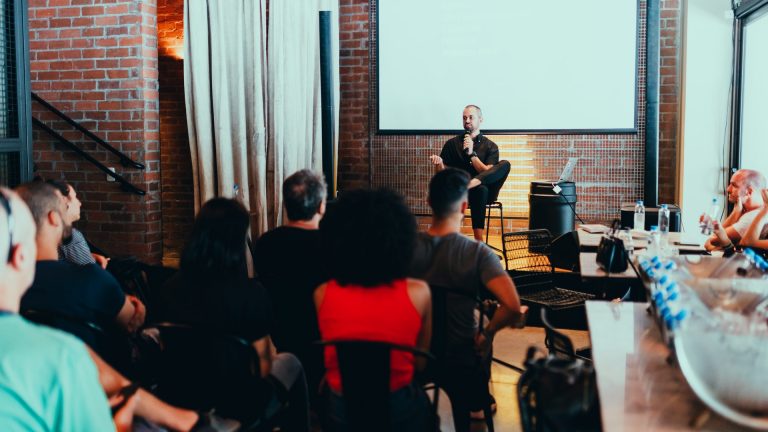- How one Acquisition Entrepreneur spent their first month after closing on a business.
- Why empowering your employees is so important.
- How to identify low-hanging-fruit opportunities and make quick changes to create buy-in.
“It's been every bit as challenging as they told me,” Ken laughs. “But I’m very excited about the future.”
It’s been just one month since Ken officially took ownership of A1 Granite in Saint Augustine, Florida, after finding the deal through Acquira’s training.
Ken actually went through the training in record time, closing on his business just four months after bringing it to our Investment Committee – a much more abbreviated timeframe than we’re used to seeing. In fact, he was so impressed by Acquira’s process that he became a partner in the company. Thanks to that, we have a unique amount of access to him and his business, and we’ll be sharing deep insights behind the scenes of Ken’s acquisition journey.
And even though that journey has really just begun, there are still many takeaways. From accounting to payroll, things seemed to keep popping up that Ken wasn’t expecting.
“It was pretty difficult, trying to figure out the formulas and how much was owed the seller and how much would be owned by me once they finished the project,” Ken explains. “So that was pretty difficult. We even had the accountants on site trying to help us work through it. And it was the day of closing. So it took longer than expected to find out where the open orders were and what stage they were at.”
For Ken, the hardest part of those early days was that all of the paperwork took him away from getting to know his new employees. “I wanted to be more with the people, and I just spent a lot of time making sure all [the accounting] was straight,” he says.
Watch the full interview here.
Giving People A Voice

Still, even though he couldn’t spend as much time with them as he would have liked, the people made the process bearable.
“[People] have been very open to change, and they have many suggestions. So that was a pleasant surprise,” he shares. “None of those people were stuck in their ways.”
In fact, it was this openness that kept Ken motivated throughout the process. People’s willingness to meet and discuss their ideas about the company was a huge win for the new owner and his company.
“Now they feel like they're being heard. They have a voice, and somebody can effect change now in a way that makes sense,” he says.
This was especially true given the fact that Ken had identified culture as one of the weak spots in the business. According to Ken, a lack of direction and strong leadership in certain departments was holding the company back. This culture led to many people talking about other employees behind their backs. Ken quickly learned he needed to be a neutral party in potential disputes.
“I learned very quickly not to form opinions about someone until I actually talked to that person,” he says.
There were certain people within the organization who, at first, didn’t seem like team players. They came across as standoffish or rude. But according to Ken, this resulted from them not being listened to, which led them to act out.
“So, I think when you give people a forum to actually [be heard] and they believe that you've got their best interests at heart, I think it goes a long way,” he says.
Finding Efficiencies
Beyond empowering his employees, the next item on Ken’s list was to find efficiencies. These were low-hanging fruit opportunities to help foster buy-in rather than disruptive changes that could cause people to panic about the new owner.
Companies that have been operating for many years often have an old-fashioned way of doing things and that can lead to inefficiencies.
We’ve encountered this many times at businesses we’ve worked with: companies that have been operating for many years often have an old-fashioned way of doing things that can lead to inefficiencies.
As we mentioned, there were some discrepancies around open orders and who would see the profits from those. But those weren’t the only accounting issues that Ken encountered. In fact, Ken believed several accounting and operational throwbacks could be done away with.
For one, the company was still cutting physical checks, and the previous owner had to sign off on each of them. A way to free up his own time so he could pay attention to other areas of the business was to automate the process.

There was another issue where field employees needed sign-offs from the seller for simple matters. If a worker broke a backsplash or a customer called in and wanted something specific, the employees would have to get the go-ahead from the owner before proceeding. It created a bottleneck in the company, and it was easily solvable.
If the request was below a certain number of dollars, Ken empowered the employees to make that decision and care for the customer.
“I told them this,” Ken explains. “You’ve got two stakeholders: You’ve got the customer, and you have to take care of our customer or client. But you also have to take care of the company. So try to figure out in your mitigation of whatever the issue is, you've got two people that you need to answer to.”
This had the added benefit of encouraging more creativity and collaboration, according to Ken. “Nobody's making decisions in a silo, and they start leaning more on each other. And they're having more creative headspace to think about how to actually solve a problem rather than running to someone … to solve it for them.”
Changes like these are a great way to create buy-in from your new employees. As we are always looking to move businesses from owner-run operations to management-run companies, empowering people to make their own decisions leaves them with a sense of ownership and pride in their company and job.
Conclusion: Looking Ahead
As he has moved into the second month of his post-acquisition life, Ken continues to work through the ACE Framework with his Acquira Certified Integrator, Brian Stroh. He’s in the process of purchasing new vehicles for the company to be wrapped in A1’s logo.
There are difficulties ahead, but with those difficulties come opportunities, and Ken looks forward to facing them head-on.
”I'm excited about the future. It's definitely not without its challenges. But I'm really excited. I'm maybe a little nervous, but we’ve got great attitudes overall,” he says with a smile.
Please check out the full interview with Ken below and subscribe to our YouTube channel to be notified when we post new content.
Like all of the Acquisition Entrepreneurs we work with, Ken’s business buying journey began with our Accelerator Program. To start your acquisition adventure, apply to the Accelerator now.
Fill out the form below but space is limited!
Key Takeaways
- There will always be unexpected challenges in a business acquisition.
- Empowering your new employees can be a great way to improve company culture.
- In the early days of the business, look for low-hanging fruit opportunities to help get buy-in from employees.
Acquira specializes in seamless business succession and acquisition. We guide entrepreneurs in acquiring businesses and investing in their growth and success. Our focus is on creating a lasting, positive impact for owners, employees, and the community through each transition.



